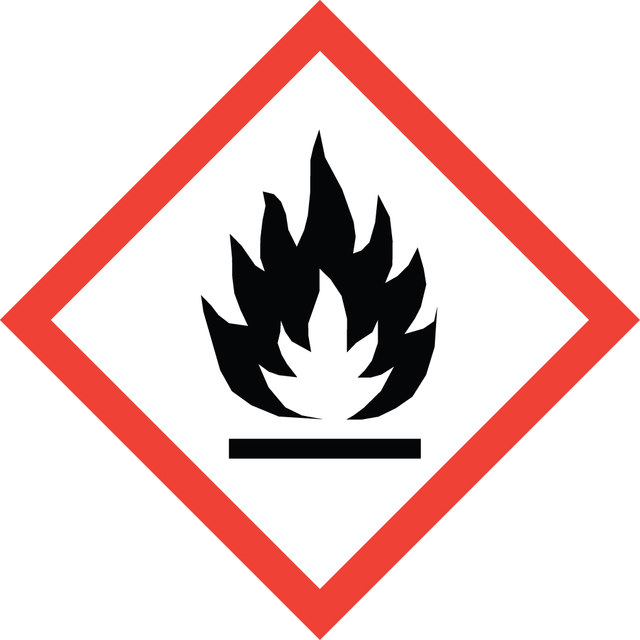676918
Carbon disulfide
ACS reagent, ≥99.9%
로그인조직 및 계약 가격 보기
크기 선택
제품정보 (DICE 배송 시 비용 별도)
실험식(Hill 표기법):
CS2
CAS 번호:
Molecular Weight:
76.14
Beilstein:
1098293
EC Number:
MDL number:
UNSPSC 코드:
12352100
PubChem Substance ID:
NACRES:
NA.21
Grade:
ACS reagent
Bp:
46 °C (lit.)
Vapor pressure:
5.83 psi
Grade
ACS reagent
Quality Level
vapor density
2.67 (vs air)
vapor pressure
5.83 psi
분석
≥99.9%
양식
liquid
autoignition temp.
212 °F
expl. lim.
50 %
dilution
(for analytical testing)
불순물
H2S, passes test (lim. ~1.5 ppm)
SO2, passes test (lim. ~2.5 ppm)
≤0.05% water
증발 잔류물
≤0.002%
색상
APHA: ≤10
refractive index
n20/D 1.627 (lit.)
bp
46 °C (lit.)
mp
−112-−111 °C (lit.)
density
1.266 g/mL at 25 °C (lit.)
SMILES string
S=C=S
InChI
1S/CS2/c2-1-3
InChI key
QGJOPFRUJISHPQ-UHFFFAOYSA-N
유사한 제품을 찾으십니까? 방문 제품 비교 안내
일반 설명
Carbon disulfide is a widely used solvent in the production of rayon fibers, carbon tetrachloride, pesticides, vulcanizers, cellophane, adhesives, and other chemicals. It is also used as a starting material in the synthesis of various sulfur-containing derivatives.
Our premium ACS solvents are ideal for routine chemical synthesis, drying, purification, and critical labware cleaning. They meet or exceed the rigorous standards of the American Chemical Society (ACS), ensuring high-quality results for your research needs.
Premium ACS Solvents: Our solvents meet or exceed the stringent standards set by the American Chemical Society, ensuring high quality and reliability for your laboratory applications.
Replicable and Publishable Results: Designed for consistency, our solvents deliver results that can be reliably reproduced, making them ideal for research that requires publication.
Versatile Applications: Suitable for routine chemical synthesis, drying, purification, and critical labware cleaning, our solvents cater to a wide range of research needs in the laboratory.
Premium ACS Solvents: Our solvents meet or exceed the stringent standards set by the American Chemical Society, ensuring high quality and reliability for your laboratory applications.
Replicable and Publishable Results: Designed for consistency, our solvents deliver results that can be reliably reproduced, making them ideal for research that requires publication.
Versatile Applications: Suitable for routine chemical synthesis, drying, purification, and critical labware cleaning, our solvents cater to a wide range of research needs in the laboratory.
애플리케이션
Carbon disulfide can be used as a solvent:
- To synthesize hydroxynaphthyl ketones via Friedel-Crafts acylation and demethylation.
- In the regioselective bromination of binaphthols.
신호어
Danger
유해 및 위험 성명서
Hazard Classifications
Acute Tox. 4 Inhalation - Eye Irrit. 2 - Flam. Liq. 2 - Repr. 2 - Skin Irrit. 2 - STOT RE 1
표적 기관
Peripheral nervous system,Central nervous system,Cardio-vascular system,Eyes
Storage Class Code
3 - Flammable liquids
WGK
WGK 2
Flash Point (°F)
-22.0 °F - closed cup
Flash Point (°C)
-30 °C - closed cup
Mark B van Eldijk et al.
Chemical communications (Cambridge, England), 49(71), 7770-7772 (2013-06-19)
CS2 hydrolase, a zinc-dependent enzyme that converts carbon disulfide to carbon dioxide and hydrogen sulfide, exists as a mixture of octameric ring and hexadecameric catenane forms in solution. A combination of size exclusion chromatography, multi-angle laser light scattering, and mass
Huan Liu et al.
Journal of hazardous materials, 235-236, 298-306 (2012-08-21)
Chemical conditioners are often used to enhance sewage sludge dewaterability through altering sludge properties and flocs structure, both affect odorous compounds emissions not only during sludge conditioning but also in subsequent sludge disposal. This study was to investigate emission characteristics
Continuous direct spinning of fibers of single-walled carbon nanotubes with metallic chirality.
Rajyashree M Sundaram et al.
Advanced materials (Deerfield Beach, Fla.), 23(43), 5064-5068 (2011-10-11)
[11C]carbon disulfide: a versatile reagent for PET radiolabelling.
Philip W Miller et al.
Chemistry (Weinheim an der Bergstrasse, Germany), 18(2), 433-436 (2011-12-14)
Margherita Maiuri et al.
Physical chemistry chemical physics : PCCP, 14(18), 6312-6319 (2012-02-15)
In carotenoids internal conversion between the allowed (S(2)) and forbidden (S(1)) excited states occurs on a sub-picosecond timescale; the involvement of an intermediate excited state(s) (S(x)) mediating the process is controversial. Here we use high time resolution (sub-20 fs) broadband
자사의 과학자팀은 생명 과학, 재료 과학, 화학 합성, 크로마토그래피, 분석 및 기타 많은 영역을 포함한 모든 과학 분야에 경험이 있습니다..
고객지원팀으로 연락바랍니다.

